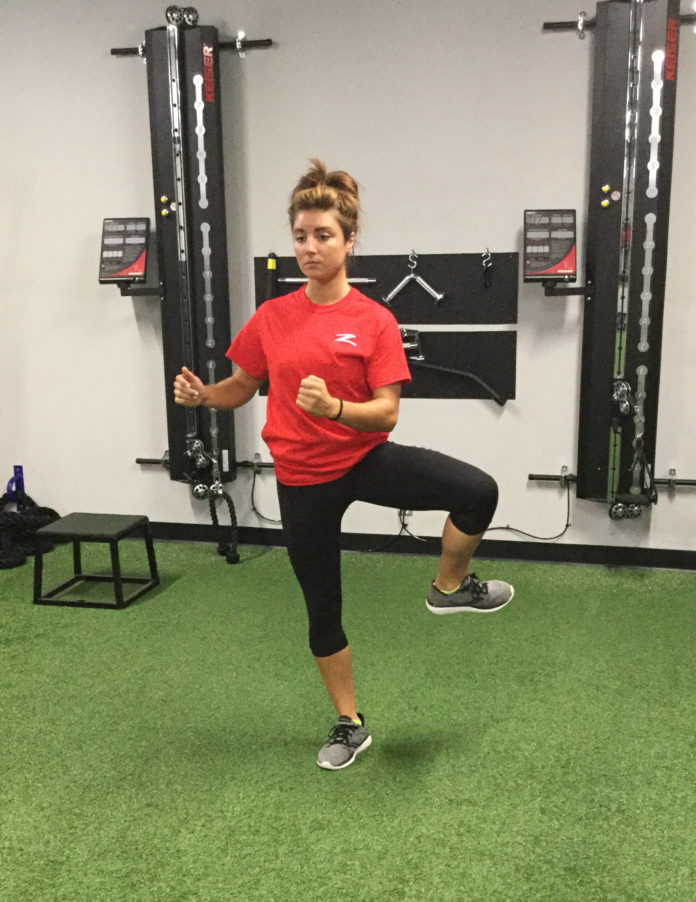By AJ Lamb, MS, CSCS, PES Supervisor / Senior Exercise Physiologist of Zarett Rehab and Fitness, Joseph Zarett, Physical Therapist, Founder of Zarett Rehab & Fitness
Every elite-level athlete understands the importance of preparing the body for the anticipated demands of sport. A planned warm-up is a key component to improving performance and keeping your body healthy. This practice is crucial for individuals at all levels—recreational or professional. The term “warm-up” is derived from the temperature-induced benefits seen from a predetermined series of movements. Some of these include increased range of motion, higher levels of force produced with each muscular contraction, and the elevated levels of oxygen delivery to working tissue, which enhances conditioning and work-capacity. These temperature-mediated benefits of warming-up are well understood—and well worth your while. Often, the previously listed benefits overshadow the acute effects that an effective warm-up has on joint structures. By getting the juices flowing, cartilage can expand allowing better joint lubrication and force absorption helping to preserve the joint structure over time. These adaptations have utility for all populations yet are particularly imperative for adults who want to continue to play the sport they love into their older years. Having said this, it remains baffling that amateurs are unwilling to adopt a brief, yet meticulous, routine before competing. Spending as little as ten to twenty minutes has been proven to help optimize performance and increase durability. The same could be said for a shorter five to ten-minute cool-down after a match. By now, it should be clear that all populations should be implementing a structured warm-up before competing. Here is a road-map to finding a strategy that works best for your individual needs.
1. WORK GENERAL-TO-SPECIFIC MOVEMENTS.
Three major classifications of a warm-up include passive, general and specific. Passive warm-up modalities should be reserved for injured populations (electric muscle stimulation, massage, etc.). General modalities include non-specific cardiovascular training such as an elliptical, stepper, jogging or walking. Finally, the specific movements are targeted towards certain muscle groups and movement patterns that will be exploited in the sport of squash. EXAMPLE: Ten minutes on a stepping machine followed by a five to ten minutes dynamic session targeting the major muscles of the hip (gluteals, hamstrings, adductors, hip flexors, quadriceps).
2. WORK IN ALL THREE PLANES OF MOTION.
Most recreational athletes tend to work in only one plane of motion, moving forward/backward. This is known as the sagittal plane. Squash requires frequent lateral (frontal plane) and rotational (transverse plane) movement in a quick, reactive manor. An effective warm-up will mimic these movements separately. EXAMPLES: Sagittal plane: Walking lunge with overhead reach; frontal plane: Lateral lunge; transverse plane: Open-the-gate.
3 . SWEAT.
Let’s remember—it is a warm-up. The temperature-mediated effects do require a bit of work, but this is well worth it. While on an elliptical machine, hold yourself accountable to reach a certain distance in a given time. This distance should be attainable, yet difficult enough where effort and focus are required. EXAMPLE: Aim to climb forty-five flights of stairs on the stepping machine in ten minutes.
4. CONSISTENCY IS KING.
Plan ahead and make time for a twenty-minute warm-up, every time. Making the warm-up part of the routine will do wonders for your game, not to mention your body will thank you when those old nagging injuries stop getting in the way. EXAMPLE: Invite a friend or colleague to join you in your new
warm-up to allow for a more social experience. This also keeps you accountable knowing someone else will be expecting you.
5. GET A PROGRAM FROM A PROFESSIONAL.
Our individual needs often cannot be ignored. With different body structures, levels of fitness and injury histories, it should be said that a certain strategy may not be ideal for multiple individuals. Consult a credentialed strength and conditioning professional or a licensed physical therapist for an evaluation to find the optimal strategy for you.





